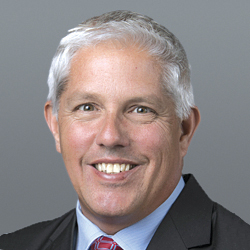 Aaron Breidenbaugh
Aaron Breidenbaugh
Director, US Markets & Regulatory Affairs
Rodan Energy Solutions (USA) Inc.
When people ask me what I do, I usually tell them that I work for a “curtailment service provider” or “CSP.” Almost invariably, the next question is “what is a CSP?” What ensues is an effort on my part to describe what “demand response,” or “DR” is. Simply put and as the name suggests, CSPs provide services related to the curtailment of energy usage, usually as part of participation in programs that pay for such reductions, but sometimes to lower peak loads and reduce electric bills.
Once I have gotten that idea across, I proceed to indicate that while utilities and wholesale market operators manage demand response programs that permit customers to participate directly, most customers do so through CSPs with whom they share a portion of the program revenues. The follow-up question I invariably get is, “How can customers tell a good CSP from a not so good CSP?”
There are several reasons why it is worthwhile to pay a third party to facilitate participation load reduction activities.
First, all DR programs have a minimum participation threshold, usually around 100 kilowatts. This means that some otherwise willing participants would not meet this direct participation threshold. However, the programs allow third parties to “aggregate” several smaller customers into a group that meets the minimum size limit. This is one of the services that CSPs provide and why they are often known as “aggregators”. An effective aggregator has enough customers across program geographies that will allow any customer, large or small, to participate.
Second, DR participation rules can be quite confusing, as can the means of monetizing load reductions. Often this happens through participation in highly complex wholesale markets for capacity, energy and ancillary services. While the largest and most sophisticated customers may have the resources and inclination to understand these participation rules, most do not. They are in business to do their business, not to be experts in regional power markets or utility DR programs. CSPs are experts in these markets and programs. They simplify participation rules, understand customers’ needs and limitations, and maximize revenues, while minimizing impacts on everyday business. An effective CSP has a thorough understanding of how DR programs are designed and how regional markets work.
Furthermore, general market rules, as well as DR-specific program designs are constantly evolving from one year to the next. Sometimes for the better, but sometimes for the worse. Utilities and market operators are continually seeking to make changes that better meet their needs, but which could make participation more difficult or expensive. Effective CSPs are active in the regulatory proceedings where these modifications are decided, defending their customers interests against adverse changes and constantly attempting to improve program designs.
Third, DR programs have general requirements that stipulate when and under what conditions load reductions can be called on, how quickly customers need to respond, how long such reductions must last and how frequently responses may need to occur. Not all customers’ operational flexibility will exactly match program requirements. This can lead individual customers to underestimate their ability to participate and, in isolation, perhaps conclude that they cannot participate.
Experienced CSPs can help in a couple of ways. For one, they are familiar with the operational limitations that different types of businesses may face and have found ways to accommodate them. More importantly though, CSPs with multiple customers in each region and program can aggregate those customers beyond just meeting minimum size requirements. They can also aggregate different types of customers for performance purposes, delivering as group what individual members could not.
Fourth, and on a related note, customer performance under the most popular and highest paying DR programs is mandatory. There are significant penalties associated with not reducing load when asked, for as long requested, and in the amounts committed to. Absent the involvement of a CSP, these penalties would fall directly on the participating . However, most CSPs insulate their customers from these penalties. They can do this by offsetting the underperformance of some customers in an aggregation with the overperformance of others. An effective CSP does not pass nonperformance penalties on to its customers. Instead, those that are repeatedly unable to respond are simply dropped from the program.
Fifth, in many jurisdictions, such as New York, customers can participate in multiple programs at the wholesale and retail level, depending on their operational flexibility. The revenues from these programs can “stack” to provide vastly more revenue to the customer. In addition, most large customers have a demand component to their retail bill and reducing their peak load can substantially reduce power costs. In some cases, these “peak shaving” savings can be added to the DR program value stack. The effective CSP understands all the value stack components that are available to a given customer and maximizes those benefits consistent with that customer’s flexibility. When it comes to peak shaving, the effective CSP understands what drives a customer’s peak load (demand) charges and can predict peak hours such that demand charge savings are maximized with the minimum number of load reductions.
In summary, an effective CSP:
- Has a significant number of other customers in the programs you are considering.
- Has a thorough understanding of all available programs and markets available to you.
- Is active in stakeholder and regulatory proceedings concerning those programs and markets.
- Is familiar with your type of business and has enrolled similar customers in your DR program(s.)
- Does not pass on non-performance penalties to you if you are part of an aggregation.
- Understands all your value stacking opportunities and maximizes your revenues and savings.
- Understands your peak shaving opportunities and can effectively predict peaks.
These represent the most significant factors that define an effective CSP, but load reduction activities are just one aspect of providing customers with value. How customers use energy is a multifaceted discipline that includes procurement, efficiency of consumption, installation, achievement of sustainability goals, optimized use of distributed energy technologies such as solar, storage, heat pumps or cogeneration, and more.
Ultimately, every customer should have one or more trusted energy advisors who will help navigate the complex sea of alternatives, of which demand response is only one. We urge you to select Rodan to be one of your trusted energy advisors.
Aaron Breidenbaugh BIO:
Aaron Breidenbaugh is the Director, US Markets and Regulatory Affairs, tasked with expanding Rodan’s presence within the complex regulatory markets at the federal, state, ISO, and utility levels.




